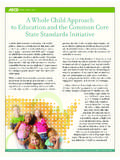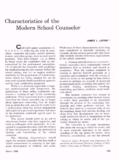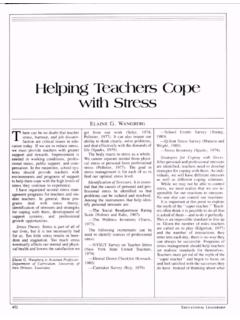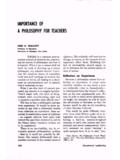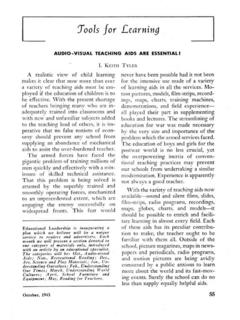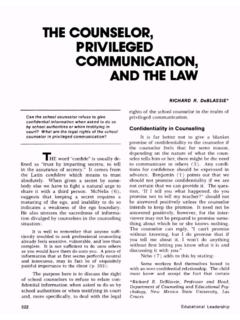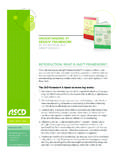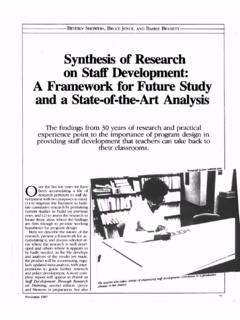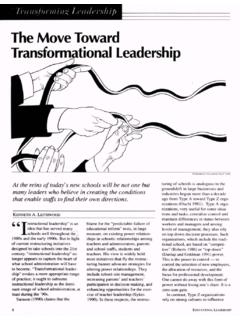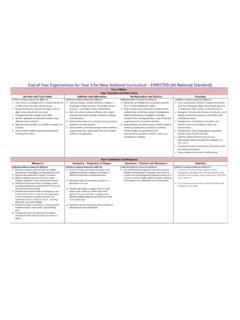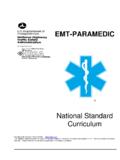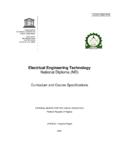Transcription of Political Dimensions of Curriculum Decision …
1 J. Arch Phillips, Jr. and Richard Hawthorne Political Dimensions of Curriculum Decision making " Curriculum design, development, and Deciding who should have access to what evaluation are, always have been, and knowledge; how that knowledge is to be selected, organized, and presented; who should be evalu always will be special cases of Political ated about what and how , .. is clearly a proc behavior." These authors examine the ess of allocating values. It is a Political reality that implications of Political realities as these some people have greater power than others in affect Curriculum Decision making , making Curriculum decisions. It is also a Political reality that more and more people are seeking Curriculum Decision making finds itself in greater involvement in Curriculum matters.
2 The transition between theories of well-controlled importance of who is involved in shaping the cur models of Decision making and Political realities riculum is underscored by Schaffarzick e t al. when imbedded in forces at national, state, and local they state, ".. concern for who should make levels. Curriculum design, development, and evaluation are, always have been, and always will be special cases of Political behavior. By Political 1 Jay D. Scribner and Richard M. Englert. 'The Poli tics of Education: An Introduction." See: Jay D. Scribner, behavior we mean activity directed toward influ editor. The Politics of Education, 76th Yearbook of the encing or controlling decisions about the alloca National Society for the Study of Education.
3 Chicago: tion of values. 1 University of Chicago Press, 1977. p. 22. 362 EDUCATIONAL LEADERSHIP. Curriculum decisions appears to take priority over choices among alternatives. For another perspec the question 'what shall be taught?' " 2 tive on the Curriculum priorities of a key federal educational agency, it is instructive to review the Who does influence the allocation of values products of the NIE Curriculum Task Force. 4. that result in curricula? Clearly the federal government influences To what extent do local, state, and national Curriculum Decision making , particularly in sup sources influence or have control over Curriculum port of selected Curriculum research and develop matters?
4 Ment efforts. To suggest that "they" control What characterizes the Political activities Curriculum Decision making at the state or local of Curriculum development at the local, state, and level is naive and ill-founded. Of perhaps greater national levels? power than the substantive focus of federal aid What are the points of demand and con to Curriculum Decision making is the imposition of flict in contemporary Curriculum Decision making ? a way of thinking and talking about Curriculum These questions guide our examination of the locus of Curriculum influence and control, the forms of Political behavior engaged, and the "Who influences Curriculum Decision mak points of conflict focused upon in Curriculum ing?
5 Nearly any organization, at any level, Decision making . that has a concern. Who controls curricu The Locus of Curriculum Control lum Decision making ? No one.". Sorting out the quandary of federal vs. state vs. local influence is difficult at best. The inter demanded of any persons who choose to avail locking relations are complex and frequently un themselves of federal dollars or to meet federal clear. With respect to federal control, the issue is regulations. The specifications for grant proposals how much really exists, and just what is the nature require a systems/technological rationality that of federal Curriculum influence? Responses to this forces an economic model on the Curriculum de- question are highly dependent on whom you ask veloper/evaluator.
6 The potential consequences of about which programs or situations. Some observ technological rationality have been set forth by ers have suggested that federal influence pervades virtually all facets and levels of the educational With regard to state level of control and enterprise, creating de facto control of education influence the state still holds the ultimate obliga at the state and local levels through the myriad of tory responsibility for education of its children compliance regulations and conditions for receipt and youth. State control of Curriculum Decision of aid. 3 making expresses itself in at least four ways: While on the one hand, strong federal legis lation continues to encourage corrective and/or 2 National Institute of Education Curriculum Task preventive programs that emerge in response to Force.
7 Current Issues, Problems and Concerns in Curric a need left unattended (purposely or unpurposely) ulum Development. January 1976. by state/local Decision makers and that are in the 3 Joel Spring. The Sorting Machine. New York: David national interest (for example, , , McKay Company, Inc., 1976. Vocational Education, Mainstreaming, and so on), communities frequently perceive these actions as 4 Harold L. Hodgkinson. NIE's Role in Curriculum Development: Findings, Policy Options, and Recommen deliberate attempts to usurp the "grassroots" re dations. National Council on Educational Research, Feb sponsibility for educational Decision making . Dis ruary 1977. tinctions between federally funded program 5 James B.
8 Macdonald. "A Curriculum Rationale.". development and priority recommendations con See: Edmund C. Short and George D. Marconnit, editors. tinue to be confused with state and local commu Contemporary Thought on Public School Curriculum . nity rights and responsibilities for making rational Dubuque, Iowa: Wm. C. Brown Company, 1969. FEBRUARY 1978 363. 1. Legislative mandates that define certain areasleaders in Michigan, an early entrant into the to be included in the Curriculum for a specified movement, feel that the assessment program has amount of time each day for 180+ days. caused inordinate attention to be directed toward 2. Statewide textbook adoption policies in sev reading and mathematics instruction, with a con eral states.
9 Sequent neglect of other important areas of stu 3. State approval of school charters and inspec dent learning. tion rights over the Curriculum are a particularly Another form of accountability legislation powerful control as many alternative schools have discovered. has been proposed for Ohio to be administered to all pupils in grades three, six, nine, and eleven 4. State certification of teachers, administrators, and supervisors by approval of college and university as prerequisites to promotion to the next grade programs. (For example, the Ohio plan for the rede level. Simultaneously, forces continue to press sign of teacher certification programs requires that for adequate programs to meet individual differ the Curriculum of all state accredited programs include ences and broad-ranging social/emotional devel preparing a ll teachers to teach reading as it relates to opment.)
10 The proposed Ohio legislation does not their specialty.)6. limit to, but explicitly requires, examinations in Where they exist, state textbook adoptions reading and computation. are without a doubt a most pervasive force. All At the local level, citizens continue to hold are not equally rigorous or controlling, however. the belief that ultimate control over educational In a recent action in Texas, an example of strong Decision making rests with the community. Given state adoption practices, the Dallas school board this point of view, one would assume the appro by a vote of six to three overrode the state adop priateness of direct community involvement in tion list in favor of a "creationist" series of biol policy formulation and Decision making .
